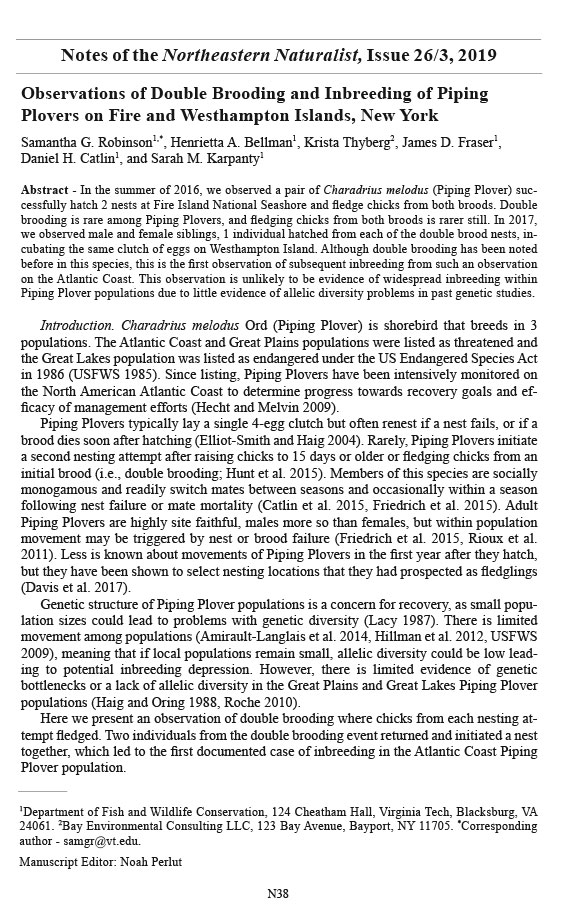Observations of Double Brooding and Inbreeding of Piping
Plovers on Fire and Westhampton Islands, New York
Samantha G. Robinson, Henrietta A. Bellman, Krista Thyberg, James D. Fraser, Daniel H. Catlin, and Sarah M. Karpanty
Northeastern Naturalist, Volume 26, Issue 3 (2019): N38–N42
Full-text pdf (Accessible only to subscribers. To subscribe click here.)

Access Journal Content
Open access browsing of table of contents and abstract pages. Full text pdfs available for download for subscribers.
Check out NENA's latest Monograph:











